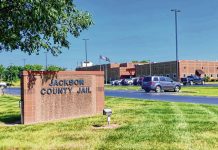As community leaders prepare turn the page on the calendar year, 2018 will mark next steps in ongoing projects that will redefine Columbus.
That includes life-and-death issues such as the worsening opioid epidemic, and quality-of-life issues such as fending off rising commuting times and improving recreational opportunities along the Columbus Riverfront.
The city began an expansive collaboration with Bartholomew County and Columbus Regional Health in the formation this year of the Alliance for Substance Abuse Progress in Bartholomew County, an effort to slow the escalating opioid-abuse epidemic by finding ways to combat it through a variety of programs.
Next, the partnering the city, county and the regional health system are preparing to hash out how the three entities will share the cost of fighting the opioid crisis.
[sc:text-divider text-divider-title=”Story continues below gallery” ]
Never before has a collaboration of this magnitude and potential cost been attempted, Mayor Jim Lienhoop said in a recent interview with The Republic.
“We have the Emergency Operations (911) Center and we’ve talked about using that as a guide,” Lienhoop said of discussions about how the three entities will work out cost-sharing agreements and responsibilities to provide programming, treatment and services to people who need help with opioid addiction.
While the city and county share the expense of operating the Emergency Operations Center, which takes 911 calls from throughout the county and dispatches police, sheriff’s deputies, ambulances and fire trucks to emergency scenes, the current partnership components are simple, he said.
“The facility is owned by the county, and they are county employees,” Lienhoop said. “The county sends a bill to us and we pay it.”
The new substance-abuse initiative may require what Lienhoop described as multiple pieces of real estate, possibly including a now-closed portion of the Bartholomew County Jail.
“This is a level of cooperation we haven’t seen in awhile in our community,” the mayor said. “We have the city, county and the regional health provider working together to develop a partnership. This indicates a significant amount of trust,” he said. “Plus, this is a significant problem.”
Chugging along
A second significant ongoing project that also involves partners came together to fund a new $30 million west side railroad overpass. The agreement was announced in July by the city of Columbus, Bartholomew County, state of Indiana and the region’s largest employer, Cummins Inc.
The city’s first installment payment to the Indiana Department of Transportation was being sent to the state this week, Lienhoop said.
Soon, the city will be taking the lead with the state transportation department and the Louisville & Indiana Railroad to begin finalizing a design for the project, which involves the overpass at State Road 46 and State Road 11 and a cloverleaf pattern that will divert traffic onto the overpass.
For example, drawings that will specify locations for the ramps need to be reviewed with the state, Lienhoop said.
Construction is going through the East Fork White River floodway, which may result in a cost increase depending on how the overpass is built, Lienhoop said. The city wants to go with an earth embankment with culverts to divert water, which is cheaper, but floodways sometimes require overpasses to be built on piers, he said.
The railroad bridge over Indianapolis Road is an example of an earth embankment bridge, he said. On the other hand, the Third Street bridge in Columbus is built on piers, which are more expensive than earth embankments.
Detailed cost estimates should be available in mid-2019, when design plans are finalized and the project is advertised for bid, Lienhoop said. The initial stages in construction could begin in late 2019, he said.
Riverfront snag
Another major project continuing into the new year is the Columbus Riverfront proposal, an $8.6 million project to provide overlooks, connections to the People Trail system along the river and an in-water recreation park. The city plans to pay for the project through a combination of Tax Increment Financing funds, state and federal grants and public/private partnerships.
The project has hit a slight snag with new developments for the planned trail connection along the bank near the Upland Columbus Pump House. That part of the plan received initial support from the Army Corp of Engineers and Indiana Department of Natural Resources, but now those agencies say stream bank issues will have to be addressed, along with taking out the low-head dam in the East Fork White River, Lienhoop said.
The expense could amount to an additional $500,000 to $600,000, Lienhoop said.
As recently as the past two weeks, the project had been forecast to cost $8.6 million project for development on east side of the river.
“We will spend the next several months — it could be six months to a year — determining where the extra funding will come from,” he said.
The city hopes to find funding for the removal of the low-head dam from grant funding or other non-city sources.
Water, well field fixes
Another expensive fix could be required in the coming year as city officials continue to evaluate the city’s water system.
A well at the Bartholomew County Fairgrounds that tested positive for E. coli has been shut down since June, and two more wells on the south end of the well field near the Bartholomew County wastewater plant were shut down in November after positive readings for the man-made chemical 1,4 dioxane.
“There was never any E. coli in their drinking water system,” Lienhoop said of a mild panic that ensued after a June boil-water order and a run on bottled water at grocery stores. “It was in a well, and that water was treated at the plant and was not contaminated.”
The well closed in June is scheduled to come back online in the next 60 days after the Indiana Department of Environmental Management approves a disinfecting and monitoring plan, he said.
The 1,4 dioxane chemical, used in industrial and commercial applications, commonly shows up as an impurity in household and personal care products, city officials said in a report to the community. It is used as a solvent in many industries.
Columbus City Utilities has been investigating the contamination since late August, after a report published by the Environmental Working Group showed the city’s water had a higher-than recommended level of the contaminant in its drinking water four years ago.
Most people, when asked, would say the appropriate level for the chemical in city water is “0,” Lienhoop said. “But even the Environmental Working Group said a small presence was acceptable, posing a minimal risk.”
The long-term solution is to have wells in a different place, he said.
A consultant is being hired to determine how the city should approach solving the problem, and specifically where the 1,4 dioxane could be coming from, Lienhoop said.
Groundwater at the south well field is flowing north to south, but the wells north of the two contaminated wells show no 1,4 dioxane contamination, Lienhoop said.
“Either the groundwater is not moving the way we thought it was, or we need to find out how the 1,4 dioxane is traveling into the two wells,” he said.
“I drink plenty of this stuff,” Lienhoop said, pointing to an ice-filled water glass nearby. “And it’s right out of the tap. I am confident we are drinking safe water.”
The state of State Street
While a new bridge over State Street with regal red sculptural elements has been completed, work on the next phase of the project is continuing.
New paths and sidewalks are being installed from the bridge to Mapleton Street, and Lienhoop said he hopes to have the third phase of the project, an upgrade of California Street from the bridge and down Fifth Street, the Avenue of the Architects, in the next two years.
If completed during that timeframe, the new sidewalk and lighting upgrades would be done before the next Exhibit Columbus installation exhibition, he said.
Lienhoop allowed that at first he didn’t quite get the look of the new State Street bridge when viewing it during the day.
But it was when he saw it at night, lit through the sculptures, that’s when he said he fully appreciated the design.
“Once I saw it lit, with the trees on the plaza and the overhead lights, I see how it sets off the entryway to the east,” the mayor said. “If you are going east, you have entered east Columbus, and if you’re going west, it announces you’ve arrived downtown.”




